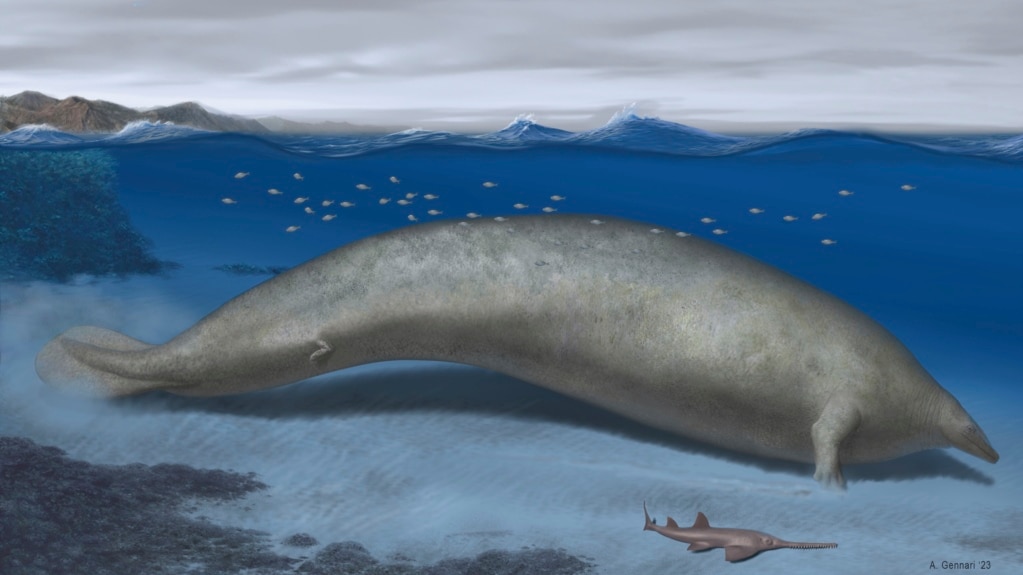Scientists have discovered fossils that might have belonged to the heaviest animal in Earth’s history.
The blue whale holds the current record as the largest creature to live on Earth. But a collection of bones found in Peru might break that record.
Researchers recently introduced the whale species in a study in the publication Nature. It is called Perucetus colossus, or “the colossal whale from Peru.” Each back bone, or vertebra, weighs more than 100 kilograms. The animal’s ribs measure nearly 1.4 meters long.
Mario Urbina discovered the bones in 2012. He is with the University of San Marcos’ Natural History Museum in Lima. An international team spent years digging them out from the side of a rocky hill in the Ica desert.
The area was once underwater and is known for its rich collection of ocean fossils. The find resulted in 13 backbone vertebrae, four ribs and a hip bone. The large fossils date back to around 39 million years ago.
Alberto Collareta is a paleontologist at Italy's University of Pisa. He was a lead writer of the study. He told The Associated Press the fossils were “unlike anything I’ve ever seen.”
Hans Thewissen is a paleontologist at Northeast Ohio Medical University who did not take part in the research. He said, “It’s just exciting to see such a giant animal that’s so different from anything we know."
After the digging operation, the researchers used 3D scanners to study the surface of the bones and also looked inside. The researchers used the huge but incomplete skeleton to estimate the whale's size and weight, said Eli Amson. He is a paleontologist at the State Museum of Natural History in Stuttgart, Germany.
The team estimates the ancient creature weighed somewhere between 85 and 340 metric tons. The biggest blue whales found have been within that range, at about 180 metric tons.
The body of Perucetus colossus stretched about 20 meters long. Blue whales can be longer, with some growing to more than 30 meters. This means the newly discovered whale was "possibly the heaviest animal ever,” said the University of Pisa’s Collareta. But, he added, “it was most likely not the longest animal ever.”
The research team said one reason the animal weighs more is because its bones are much denser and heavier than a blue whale’s bones. Those super-dense bones suggest the whale may have spent its time in less deep, coastal waters, the scientists said. Other animals that stay close to the coast, like manatees, have heavy bones to help them stay close to the seafloor.
Amson, from the State Museum of Natural History in Germany, said that without the skull, it is hard to know what the whale was eating to support such a huge body. It is possible that the large creature sought food along the seafloor, the researchers said. Or it could have eaten up tons of smaller sea life in the ocean.
Thewissen added that he would not be surprised “if this thing actually fed in a totally different way that we would never imagine.”
I’m Bryan Lynn.

